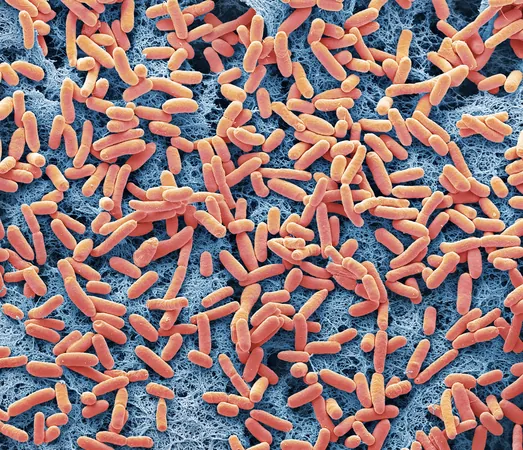
Breakthrough in Botanical Research: Microbial Cell Factories Now Producing Scarce Plant Hormones in Droves!
2025-01-17
Author: Wei Ling
Groundbreaking Study Unveils Revolutionary Method
In a groundbreaking study, researchers from the University of California, San Diego, UC Riverside, and Utsunomiya University in Japan have unveiled a revolutionary method for producing elusive plant hormones more efficiently than ever before. Published in the reputable journal Science, the paper titled "Evolution of interorganismal strigolactone biosynthesis in seed plants" details this impressive innovation, which promises to change the way we understand plant biology.
Focus on Strigolactones
The focus of this research is on strigolactones—vital hormones in plants that play pivotal roles, from regulating growth and development patterns to managing symbiotic relationships with soil microbes and triggering the germination of parasitic plants. The production of these hormones has traditionally been problematic due to their scarcity, with scientists being forced to conduct laborious and often wasteful extraction processes that require massive volumes of plant material.
Innovative Use of Microbial Cell Factories
To tackle this challenge, the research team has ingeniously utilized microbial cell factories, combining Escherichia coli with Baker’s yeast to create a miniaturized production line. Remarkably, this co-cultivated system yields more than 125 times the amount of strigolactones previously achievable, making it a game-changer in the field of plant research. An earlier study published in Science Advances provided detailed insights into how they developed this innovative platform.
Ecological Benefits of the Research
As it stands, isolating sufficient strigolactone for experimentation usually demands around 1,000 liters of xylem sap. To put this into perspective, scientists could only extract about 340 liters from just a handful of poplar trees, making it less than half of what’s necessary for meaningful studies. Describing the findings, Professor Yanran Li emphasized the ecological benefits: "By using this microbial cell factory, you can bypass extracting tons of xylem sap and thus save countless trees, minimizing our ecological footprint while enhancing our understanding of vital plant molecules.”
Insights into 16-Hydroxy-Carlactonic Acid
The research doesn’t stop at just producing these hormones; it also elucidates a lesser-studied component: 16-hydroxy-carlactonic acid (16-OH-CLA). Although previously reported, the exact structure and significance of this hormone remained unclear. However, thanks to the ample samples generated through their microbial factories, the research team was able to clarify its structure and gain fresh insights into its plant-specific presence. The findings indicate that 16-OH-CLA is only detectable in plant shoots and shows a pattern of seasonal presence in trees, while vanishing entirely in annual plants once they reach maturity.
Potential Implications for Plant Research
Though their current study specifically targeted strigolactones, the implications of this technology are vast, with researchers asserting that this microbial cell factory could potentially unlock the production of a plethora of other scarce plant molecules. With the potential to advance agricultural practices and enhance our comprehension of plant biology, this innovative approach could herald a new era in plant hormone research.
Future of Plant Biochemistry
As scientists continue to explore the depths of plant biochemistry, the question remains: could this revolutionary method change how we cultivate and interact with our natural environment? Stay tuned for even more developments in this exciting field!




 Brasil (PT)
Brasil (PT)
 Canada (EN)
Canada (EN)
 Chile (ES)
Chile (ES)
 Česko (CS)
Česko (CS)
 대한민국 (KO)
대한민국 (KO)
 España (ES)
España (ES)
 France (FR)
France (FR)
 Hong Kong (EN)
Hong Kong (EN)
 Italia (IT)
Italia (IT)
 日本 (JA)
日本 (JA)
 Magyarország (HU)
Magyarország (HU)
 Norge (NO)
Norge (NO)
 Polska (PL)
Polska (PL)
 Schweiz (DE)
Schweiz (DE)
 Singapore (EN)
Singapore (EN)
 Sverige (SV)
Sverige (SV)
 Suomi (FI)
Suomi (FI)
 Türkiye (TR)
Türkiye (TR)
 الإمارات العربية المتحدة (AR)
الإمارات العربية المتحدة (AR)